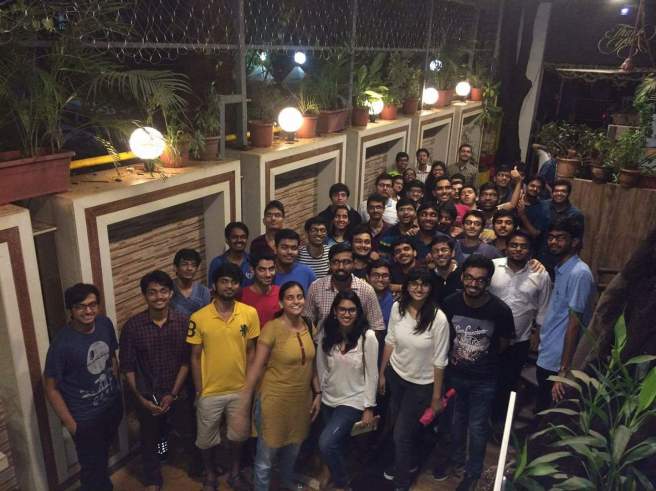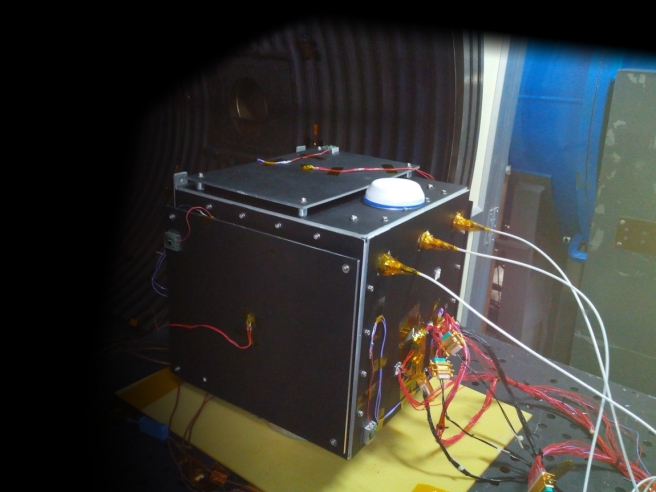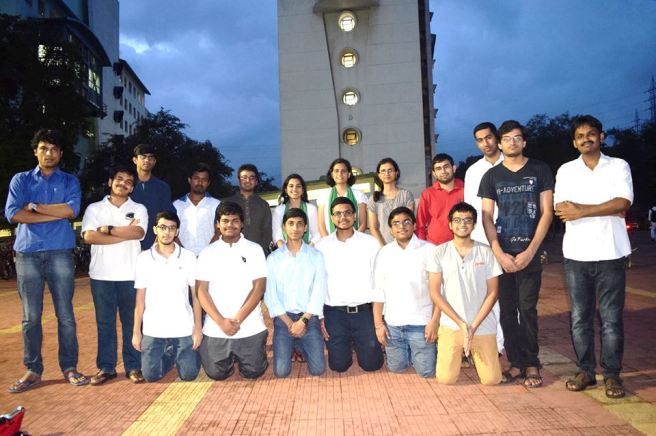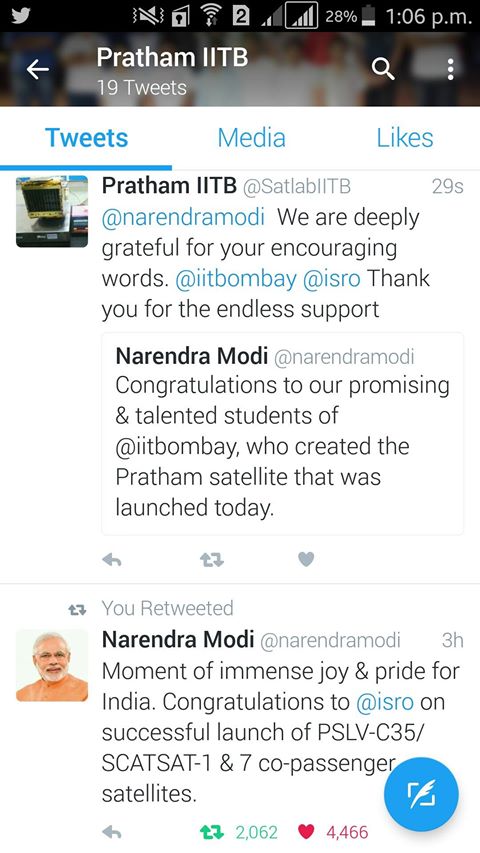“Live for moments you can’t put into words”
A couple of weeks after the launch of Pratham, the first student satellite of IIT Bombay, we were invited to a college for giving a talk on the project. The organizers quite nervously asked us, “We have reserved a two hour slot for your talk. Do you think that it’ll be too much?” We had a good laugh in the team. Two hours? Even two days would fall short if we were to speak about the project. Considering that, this article would do a terrible job in describing our story. However, considering the occasion (the first anniversary of the launch of Pratham), I guess an attempt would be worth it.
The factual parts of the story can be found in any of the countless articles written after the launch of Pratham. So let me focus on the less-spoken-about parts of this story. Parts which make the job difficult for words to narrate this story. Parts which make it difficult for one to decide whether building the satellite was more difficult than telling the story, or vice versa!
Pratham’s story is a one of defying odds, overcoming obstacles and overwhelming oneself. Ratnesh Mishra, the Project Manager when the satellite was launched, often says, “We always thought that we are building the Pratham satellite. No one realised that Pratham was actually building us.” The idea of students building a satellite sounded challenging enough. Major engineering and technical challenges were to be expected. However, hardly anyone would’ve expected that the project would compel everyone to push their limits in all aspects, engineering being just one of them.
Consider for example, the problem of maintaining continuity of the project. Passing on the dreams, the objectives, the value structure, the restlessness from one generation to another is a big challenge in itself. Now consider the situation where most of the team members have graduated, only 3 members are left, the institute has lost confidence in the project and if you want to see your satellite getting launched, you are confronted with the monumental task of conducting fresh recruitment, training the new members to enable them to reach the level of the old team, help them go beyond that, to finish what the old team had started. Put yourself in this situation for a moment, consider the odds of success. What do you do? Pratham asked this question to three people in 2012. We all know their decision!

Consider that you haven’t gone home for the past one year. Finally, you have planned a short week-long visit to your home, booked the tickets and are all set to leave. Just a couple of days before leaving, you realize that help is required by the team in the area in which you hold expertise. You have to choose: Cancel the tickets, stay back and help the team or go home to your parents who have been waiting for more than a year to see you. If you cancel the tickets now, don’t expect to go home for another 4 months. Pratham presented this choice before a person in 2016. Guess what he chose!
Consider that you are finally, after a wait of 3 years, performing the test, the successful completion of which would ascertain the launch readiness of the satellite. It’s a 40 hour long test and you are awake for the entire duration of the test. After all, it’s the test you’ve been preparing for all this time. Your satellite is in an evacuated chamber. You can’t see it. The only way you can know about its health is through the selective data it sends out of the chamber. 30 hours into the test, one component fails. You are given 1 hour to provide a convincing explanation, else risk an indefinite postponement of the test. Sleep deprived, you have to work with the meager data that you have and apply all the engineering you have learnt in your life, in this one hour. The innumerable people who have worked on the project since its inception, are counting on you. An indefinite delay is simply unacceptable. Imagine the pressure you’d be going through. Where else do you get to face this pressure in your undergrad? Pratham made about 7 people experience this pressure in a small underground chamber in ISRO Satellite Center, Bangalore. A detailed account of this incident can be found here: https://theiinaniitian.wordpress.com/2017/09/28/a-40-hour-adventure-prathams-thermo-vacuum-test/.

Consider that your placements are just a month away, and your team is performing the final leg of the testing at ISRO. Suddenly, you are required there. Going to ISRO would mean spending at least 20-25 days in the satellite testing and consequently, sitting for placements with hardly any preparation. Imagine the internal battle you’d go through before arriving at such a decision. Pratham made a person go through this internal battle. Surprisingly, arriving at the decision was very simple for her.
Consider that the testing of Pratham Qualification Model will happen in this semester, and hence you will have to spend a sufficient amount of time in ISRO, Bangalore. The professor of a certain course demands 80% attendance, which you know you won’t be able to meet. The professor doesn’t agree to give you any concession. You are in your pre-final year. If you drop the course, you have only next year to complete it, else you get an extension. And next year might not be different. You might have launch related activities, which will take up a sufficient amount of your time. And you can’t compromise with the launch activities. So should you clear this course now, and not risk an extension, or focus on the satellite testing, and leave things to chance? Pratham presented this dilemma before one person. You must have guessed his decision.

There are many more incidents which aren’t mentioned here to keep the length of the article in check. These incidents show how the satellite challenged each and every individual at every stage of the project. Technical challenges are just one aspect of the story. But Pratham made each member make difficult decisions, go through internal battles and dilemmas, go through situations which made them question why they are even doing the project in the first place. It should be noted that the team hadn’t launched any satellite prior to Pratham, and not everyone in the institute believed that the team will be successful. They had to battle negativity, despair, self-doubt, moments of extreme ‘give-up’, moments of extreme uncertainty about the future, all for one dream: To see the satellite get launched. People know about the glamour associated with the satellite team. People know how much media attention, how many accolades it received post launch.

But only the people who have been through this journey know, that these accolades and felicitations mean nothing to them. Seeing ‘Pratham Sep’ on the screen was felicitation enough.
The rest of the institute will remember the people in the launch team as the people who took IITB into the space age. But the people who have worked with them, who know their story, will remember them as people who braved all odds, fought countless internal battles and kept smiling and motivating other team members throughout the journey, people who showed that if you are determined enough, you can scale any peak that you want, people who took every challenge presented by Pratham head-on.
Like I said in the first paragraph, I don’t think this article does any justice to the story. But, sometimes, words fall terribly short when it comes to narrating a story. Sometimes, the very act of narrating the story causes it to lose its shine. It’s a paradoxical situation. Another challenge presented by Pratham!


I was almost in tears while reading through the article. Great article. Thank you soo much for you wonderful words
LikeLike
Thanks Harsh. Glad that you liked this article.
LikeLike